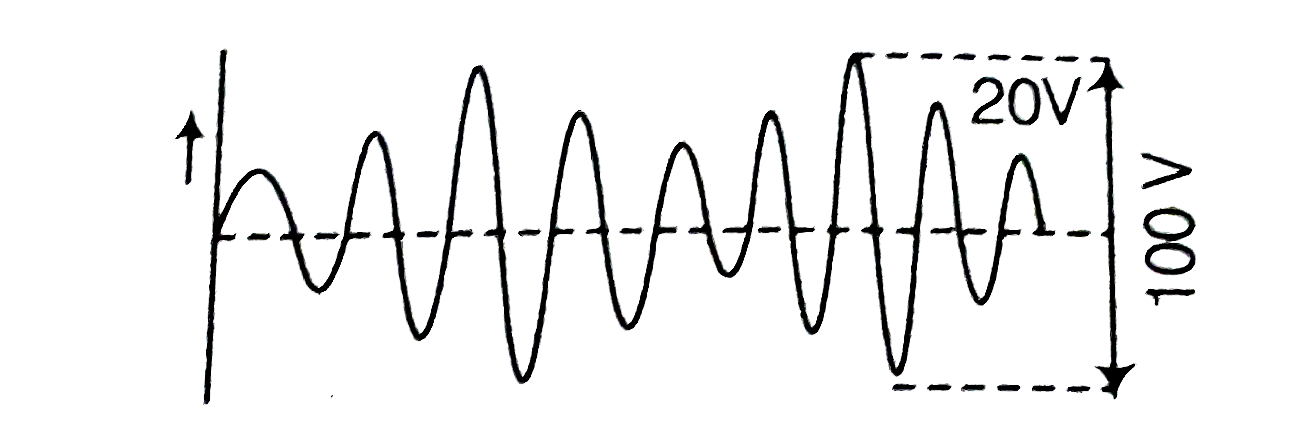Find the amplitude of side bands in the above problem in terms of modulation index μ and carrier wave amplitude Ac.
μAc2
Topper's Solved these Questions
- COMMUNICATION SYSTEMS Book:AAKASH INSTITUTEChapter:COMMUNICATION SYSTEMS Exercise:ASSIGNMENT SECTION A Objective (Only one answer)
Explore 34 Videos
- COMMUNICATION SYSTEMS Book:AAKASH INSTITUTEChapter:COMMUNICATION SYSTEMS Exercise:ASSIGNMENT SECTION B Objective (Only one answer)
Explore 20 Videos
- COMMUNICATION SYSTEMS Book:AAKASH INSTITUTEChapter:COMMUNICATION SYSTEMS Exercise:ASSIGNMENT SECTION D (Assertion-Reason)
Explore 10 Videos
- ATOMSBook:AAKASH INSTITUTEChapter:ATOMSExercise:ASSIGNMENT SECTION J (Aakash Challengers )
Explore 4 Videos
- CURRENT ELECTRICITYBook:AAKASH INSTITUTEChapter:CURRENT ELECTRICITYExercise:ASSIGNMENT SECTION-J
Explore 10 Videos
Similar Questions
A: If the amplitude of a message signal is half of the amplitude of the carrier wave, then the index of modulation is 50%.
R: In amplitude modulation the amplitude of the carrier wave varies in accordance with the signal voltage of the message signal.
View SolutionWhy is the amplitude of modulating signal kept less than the amplitude of carrier wave ?
View Solution
Knowledge Check
Amplitude modulation index μ determines
AThe quality of received signalBThe quality of transmitted signalCThe quality of carrier waveDBoth (1) and (3)In AM waves, the amplitude of each side band frequency is
AEcBmEcCmEc2D2mEBoth amplitude modulation (AM) and frequency modulation (FM) are used for radio broadcasting. The amplitude of the high frequency carrier wave is varied or modulated in accordance with the variations in the amplitude of the audio signals that are to be transmitted, in te process of amplitude modulation in frequency modulation te amplitude of the carrier remains constant but its frequency is varied inn accordance withh the audio signal. Reception with AM signals is in general is affected by interference of various kinds ad elaborated equipment is required for FM broadcast.
A radio frequency carrier wave can be modulated using a-AdiodeBtriodeCdiode or a triodeDnone of the above
An audio signal of amplitude 0.1 V is used is used in amplitude modulation of a carrier wave of amplitude 0.2 V. Calculate the modulation index.
View SolutionAn amplitude modulated wave is as shown in figure . Then , the modulation index will be

View SolutionIn an amplitude modulated wave , the maximum amplitude is 10V and the modulation index is 2/3 m , then the minimum amplitude is ( in volt )
View SolutionIn amplitude modulation, carrier wave frequencies are:
View SolutionWhat is the band width in amplitude modulation ?
View Solution

